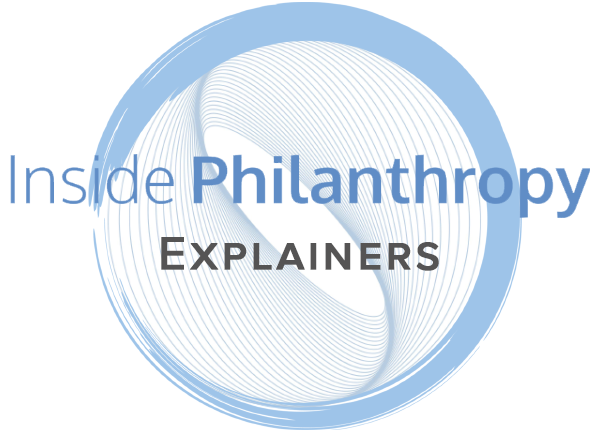IP Explainer: What Is Philanthropy Doing—or Not Doing—to Address Diversity, Equity and Inclusion?
/What’s the difference between a grant and a gift—and how do you get one? How do foundations work? What’s all this about 501(c)(3)s versus (c)(4)s? These are just a few of the questions that might be running through your mind if you’re new to the world of philanthropy and fundraising.
It doesn’t need to be so confusing.
Inside Philanthropy has produced a series of brief “explainers” to introduce you to the basics of philanthropy, defining key terms and elucidating important debates to help you find your way through all the jargon to become a more informed, more effective fundraiser.
Today, we delve into another huge topic in philanthropy right now—the need to advance diversity and inclusion in a historically homogeneous sector.
What is Philanthropy Doing—or Not Doing—to Address Diversity, Equity and Inclusion (DEI)?
Prompted and pushed by movements for racial, gender and economic justice, every sector of American society is having conversations about diversity, equity and inclusion (DEI). Philanthropy is no exception.
In philanthropy, efforts to advance DEI take on things like
The grant recipients.
How grant decisions are made.
Foundation hiring, and who is at the table in grantmaking institutions.
Foundation leadership and organizational structures.
The makeup of foundation and nonprofit boards.
Shifting cultures and practices inside philanthropic institutions.
This is not a new conversation in philanthropy. There have been active efforts to diversify philanthropy and increase equity for decades. The Philanthropic Initiative for Racial Equity, which aims to increase the amount and effectiveness of resources aimed at combating racism, was founded in 2003. In 2018, they released a timeline of race, racism, resistance and philanthropy that covers the period from 1992 to 2014. The D5 Coalition was a five-year initiative that started in 2010 to advance DEI in philanthropy, with participants including the affinity groups Asian Americans/Pacific Islanders in Philanthropy, the Association of Black Foundation Executives, Funders for LGBTQ Issues, Hispanics in Philanthropy, Native Americans in Philanthropy, and the Women’s Funding Network, among many others. The Ford Foundation offers DEI tools and resources for grantmakers.
These are just a few of the many efforts—including conferences, reports, working groups, trainings and much more—that have aimed to advance DEI in philanthropy. Some changes are happening: More grants are going to communities historically under-resourced by philanthropy, and foundation program staffs are increasingly diverse.
But still, the vast majority of foundation leaders and board members are white, and people working both alongside and within foundations point out the persistence of organizational cultures and practices rooted in hierarchy and inequity. As just one example, the majority of LGBTQ people who work in philanthropy are “in the closet at work,” according to a 2018 report by Funders for LGBTQ Issues. Philanthropy executive Edgar Villanueva, author of the book “Decolonizing Wealth,” points out how systems of oppression and exploitation are embedded in traditional philanthropy.
In the midst of a national reckoning around racial justice and white supremacy, these conversations within philanthropy are gaining increased visibility and momentum. Yet while some foundations are making meaningful efforts to advance DEI, there remain plenty of philanthropies that approach these efforts only superficially or question why they should be prioritized at all.
You might also want to check out:
Debate: Who should decide what gets funded?
“Staff Say Foundations Are Taking on Race, But Question Leadership’s Commitment”
“A Long Way to Go: What Kind of Change Is Needed Within Foundations to Advance Racial Equity?”
“As Foundations Reimagine Themselves, They Should Give Attention to DEI in Operations”
“How Melissa Madzel Builds Equity into Philanthropy Recruiting”
“How Kat Taylor and Taj James Are Challenging Philanthropy to Take Bolder Steps to Shift Power”









